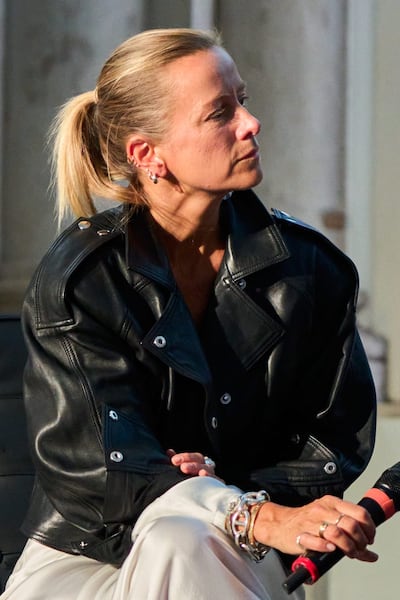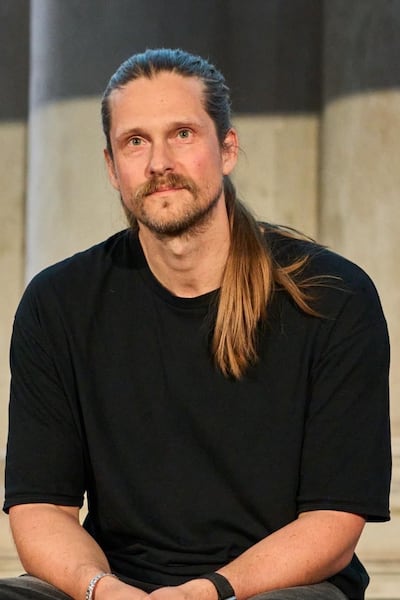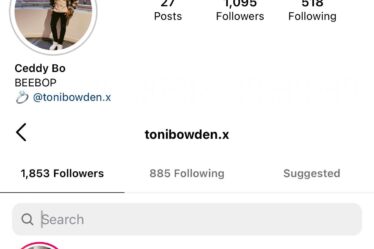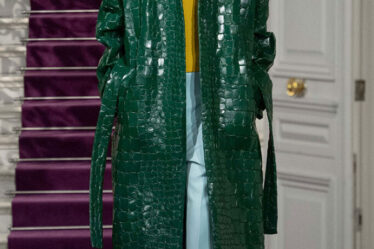
On June 16 in Milan, Copenhagen International Fashion Fair (CIFF), held a presentation and cocktail party at Palazzo Giureconsulti, to celebrate their showcase of a curated selection of market-leading Nordic designers. One of Europe’s largest and most established trade shows, their showroom space displayed the Spring 2025 collections of seven independent fashion brands — Henrik Vibskov, Adnym, Envelope 1976, Isnurh, CDLP, Mark Kenly Domino Tan and Aiayu, as part of Milan Fashion Week Men’s SS25 — and invited buyers, retailers and press to peruse the designs.
With the support of Camera Nazionale della Moda Italiana, the Milan showcase is part of CIFF’s strategy to celebrate Nordic brands and designers across the global fashion industry and calendar, with further activations to be held in New York, Florence and Munich later this year.
At the event, BoF’s Robin Mellery-Pratt and Annabel Bolton shared insights on the emerging trends surrounding identity, its importance to Gen-Z consumers, and how it can be leveraged uniquely by independent brands. In 2022, BoF found that 50 percent of Gen-Z’s disposable income is spent on fashion. However, it takes just 1.3 seconds for younger consumers to identify and dismiss online advertising — meaning marketing tactics have had to change.
In this context lies the identity-opportunity for independent brands. Indeed, 69 percent of Gen-Z shoppers agree with the statement that what they are wearing says something about them, according to a 2024 study by market research consultancy Ipsos. This expectation is accelerating, with 77 percent of teens agreeing with the same statement. What’s more, the research found that Gen-Z are buying or investing in luxury from a younger age — Millennials on average began spending on luxury at the age of 20 but for Gen-Z this age has dropped to 15.
Three designers from the curated selection of brands — Andreas Palm from CDLP, Celine Aagaard from Envelope 1976 and Frippe Persson from Adnym — were then invited on-stage to put abstract theory into practical reality and share their experience on how to authentically engage communities who prioritise their unique identities. Here, BoF shares insights from the discussion.
How have you crafted and maintained a brand identity that is distinct in the market?
AP: When launching the brand in 2016, the men’s underwear market was dominated by a handful of brands offering a fairly basic product, marketed with big logotypes. We saw an opportunity to bring a fresh perspective to the category. The brand identity of CDLP stems from a clear purpose of offering products that we want to wear, communicated in an authentic and aspirational manner.
Rooted in Scandinavian design principles, our first products were understated and minimalist, with a focus on superior fit and feel. We chose innovative fabrics like Lyocell over conventional cotton and marketed them in a way that felt true to our ethos of authenticity and creativity, shooting campaigns with friends in hotel rooms rather than studios.
My co-founder and creative director Christian Larson views CDLP as a feelgood movie you never want to stop bingeing — and this philosophy guides our visual storytelling. We focus on characters who embody the brand’s joie de vivre, inviting our community to escape into our world. The brand identity has always been guided by those same principles of authenticity and we’ve tried to stay consistent and curious, constantly seeking ways to improve our products and tell stories that resonate.
What principle do you think is most important to follow in order to authentically connect with your community?
AP: I believe it’s instrumental to have a clear vision of the type of brand and business you want to build in order maintain an authentic and cohesive brand universe that resonates with your community. An authentic connection to your customer base is so much more than a campaign or business strategy — it requires ongoing effort, care and a genuine desire to grow alongside your community.
We have always worked closely with friends of the brand, not only due to early budget constraints as a newly founded company but because collaborating with individuals who genuinely believed in our vision lent a level of authenticity that paid advertisements simply cannot achieve.
These early collaborations set the tone for our approach to community building. Eight years into the CDLP journey, we remain committed to fostering authentic connections. Whether it’s co-creating with our community, celebrating their stories, or openly sharing our own journey, we believe that investing in these relationships is the key to building a brand that stands the test of time.
Why is consistency so important in maintaining brand identity?

CA: Consistency has played an important role since we launched [Envelope 1976]. In a sea of new brands, we need to stand out and create a memorable vision for the consumer — including them in our journey and in all aspects of our brand. Today, consumers are more awake and informed, and the importance of being consistent in what we do, how we design and how we communicate transparency, is key for us as an independent brand. Consumers see through what’s real and what’s not.
Our Nordic heritage has inspired us and how we dress, which is reflected in the way we design our collections. Take, for instance, the contrast between warm Norwegian summer days and the transition into harsh winter nights — we show this in our lookbooks, which are shot locally in Oslo. Even when selecting a show venue with sustainability in mind, we prioritise spaces that embody a raw and unaltered aesthetic, allowing us to showcase that authenticity.
In an industry that is constantly changing and where trends are evolving, we have learned that our customers are returning and buying pieces that feel true to our values and also, to what I would want to wear every day. Credibility is weakened if you don’t stick to your core values and you risk losing your following.
What principle do you think is most important to follow in order to authentically connect with your community?
CA: Even though it’s important to analyse sales data and listen to your buyers and their wants, my best advice is to trust your gut. You can’t win them all, but the most important thing is not to lose the ones you have — those returning customers will be your most important spokespersons out there. Our community knows the core of the brand and we have seen that, once we experiment with new trends, such as pops of colours which aren’t very on-brand for us, the end consumer doesn’t respond to it either.
We have also found that, if a buyer asks for a particular style and we produce it for them — that same buyer will forget the design if it doesn’t sell. This can lead to styles ending up on the sales rack, which isn’t something we like to promote. For us it’s about being as transparent as we can, while being receptive and inclusive — if we strongly believe in a piece and would wear it, that’s normally the best sign to produce and sell it.
Why is integrity so important in building brand identity?

FP: When we launched [Adnym], we were conscious that in retail stores, a lot of denim especially used to be heavily branded, with numbers, logos, claims about stretch and fit. We believed that would create the opportunity for almost immediate disappointment from the customer in the fitting room or later on.
We chose to not rely on logos and marketing language — our logo is just one line. We wanted to be recognisable by the quality of our products and our materials. The physical touch was the brand; the fit of the garment, its quality. That’s why integrity has to be expressed at a core brand level.
If you are more of a logo-heavy brand, for example, you might be interested in reaching more of a “quick-fix audience” who switches alignment on a regular basis. Integrity for us is a core value, as it is the main factor connecting us long-term with our end consumers. They know what they get when they buy Adnym and they know that we will help them be and express themselves in a way that aligns with who they really are.
What principle do you think is most important to follow in order to authentically connect with your community?
FP: Find the DNA and true values of your brand and stand by them, no matter what. I’m talking about the actual product as well as the communications. Sometimes the sun will shine and sometimes the rain will pour. Don’t underestimate the new generations — they will see through you, or at least your advertising, in 1.3 seconds.
Interviews have been edited and condensed for clarity. The next edition of CIFF will take place August 7-9 2024 in Copenhagen.
This is a sponsored feature paid for by CIFF as part of a BoF partnership.



